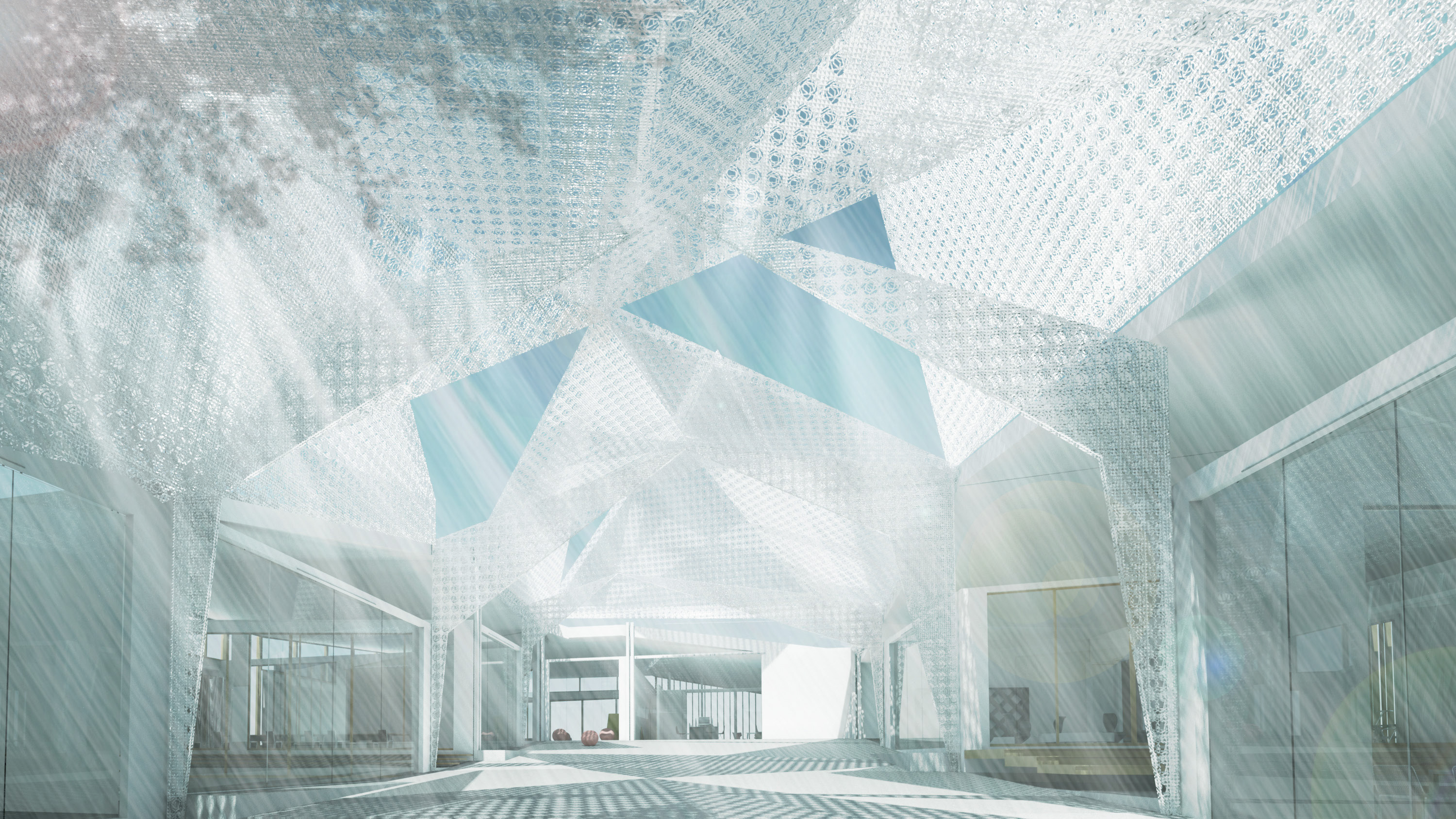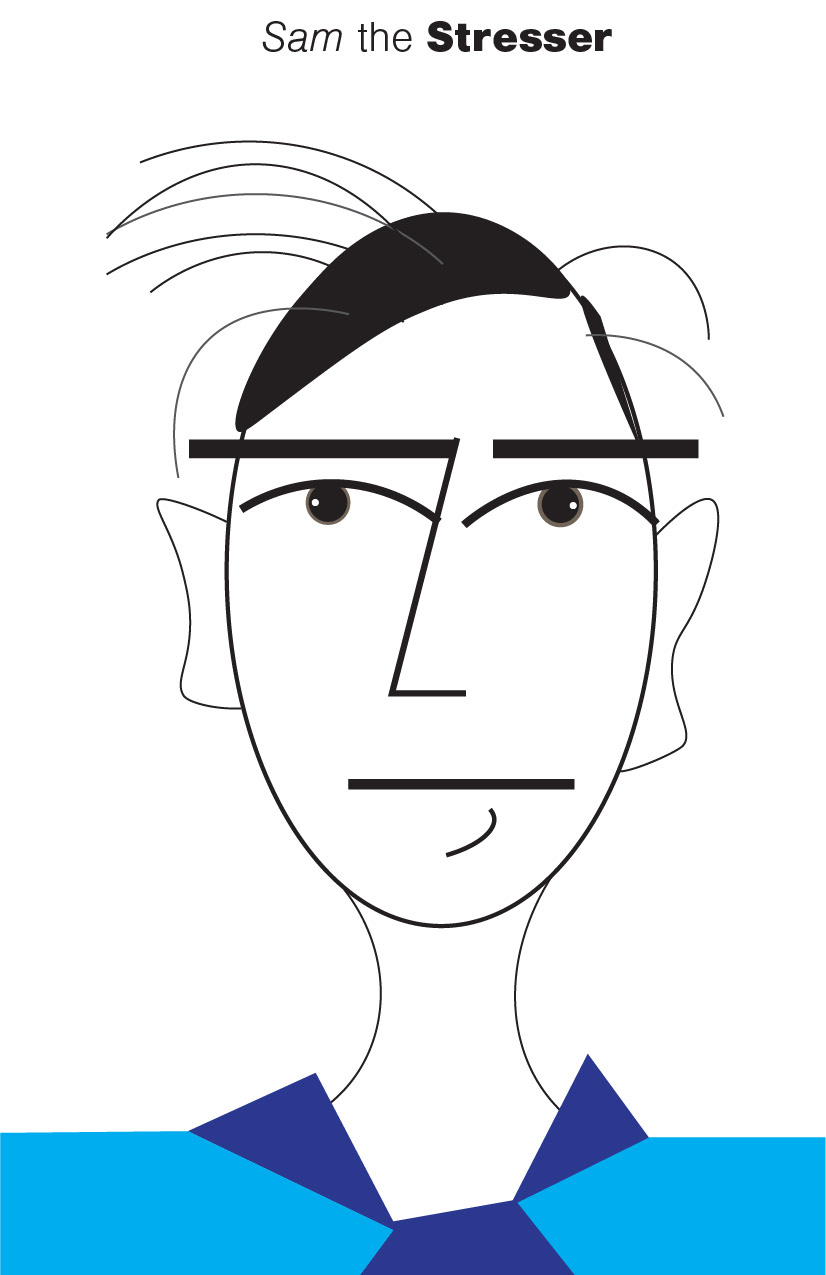






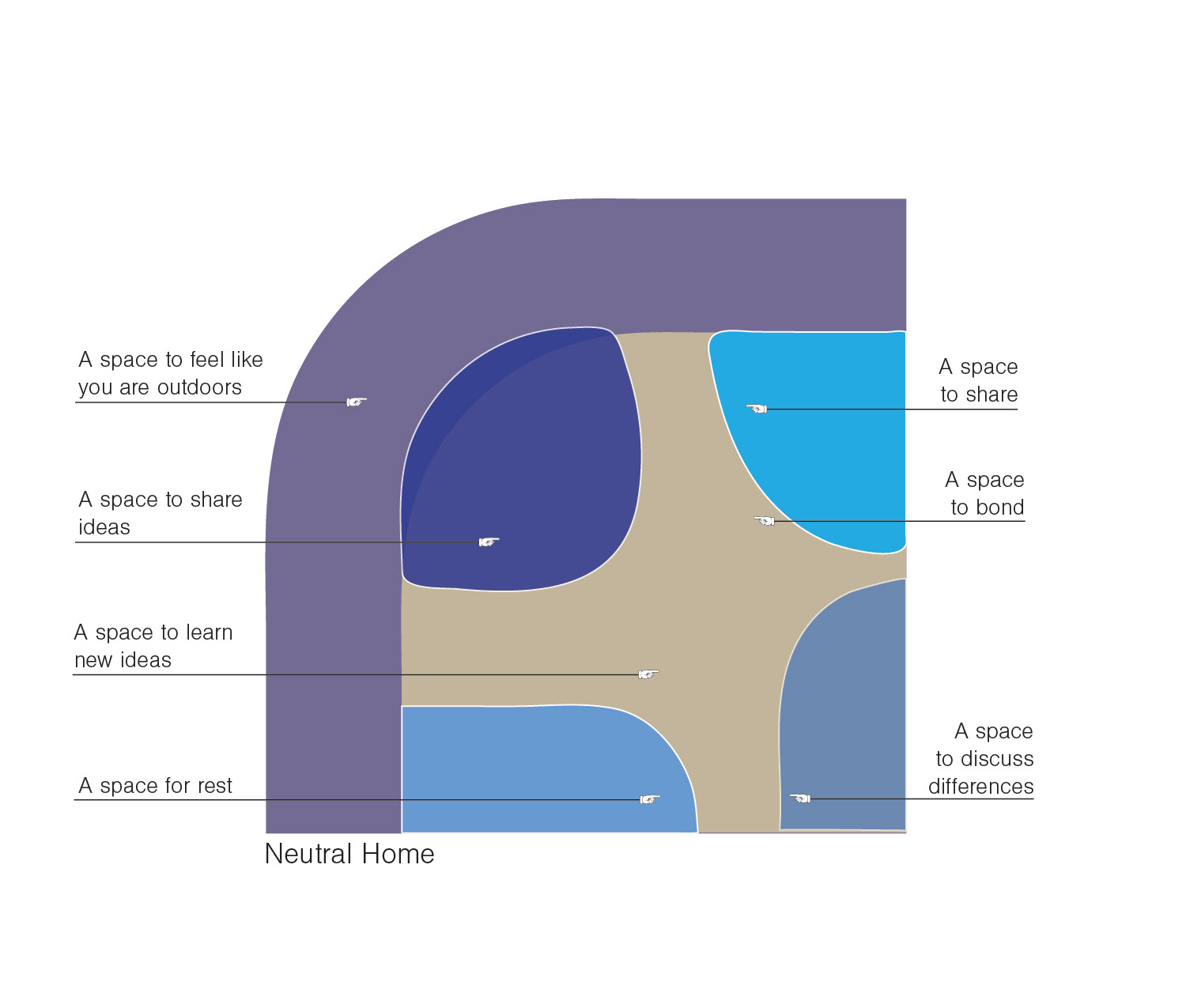

In the neutral house anyone may enter. There are a variety of places to withdraw including a space to read, dine, and for quiet meditation.
The AstroTurf green space was designed to feel like a sun-room, allowing workers to "step outside" on break.


A space primarily for internationals to feel comfortable in the workplace. The space features an area to create native dishes and meet other internationals.
A space for individuals to connect abroad will allow workers connect with loved ones abroad based on a variety of time zones.

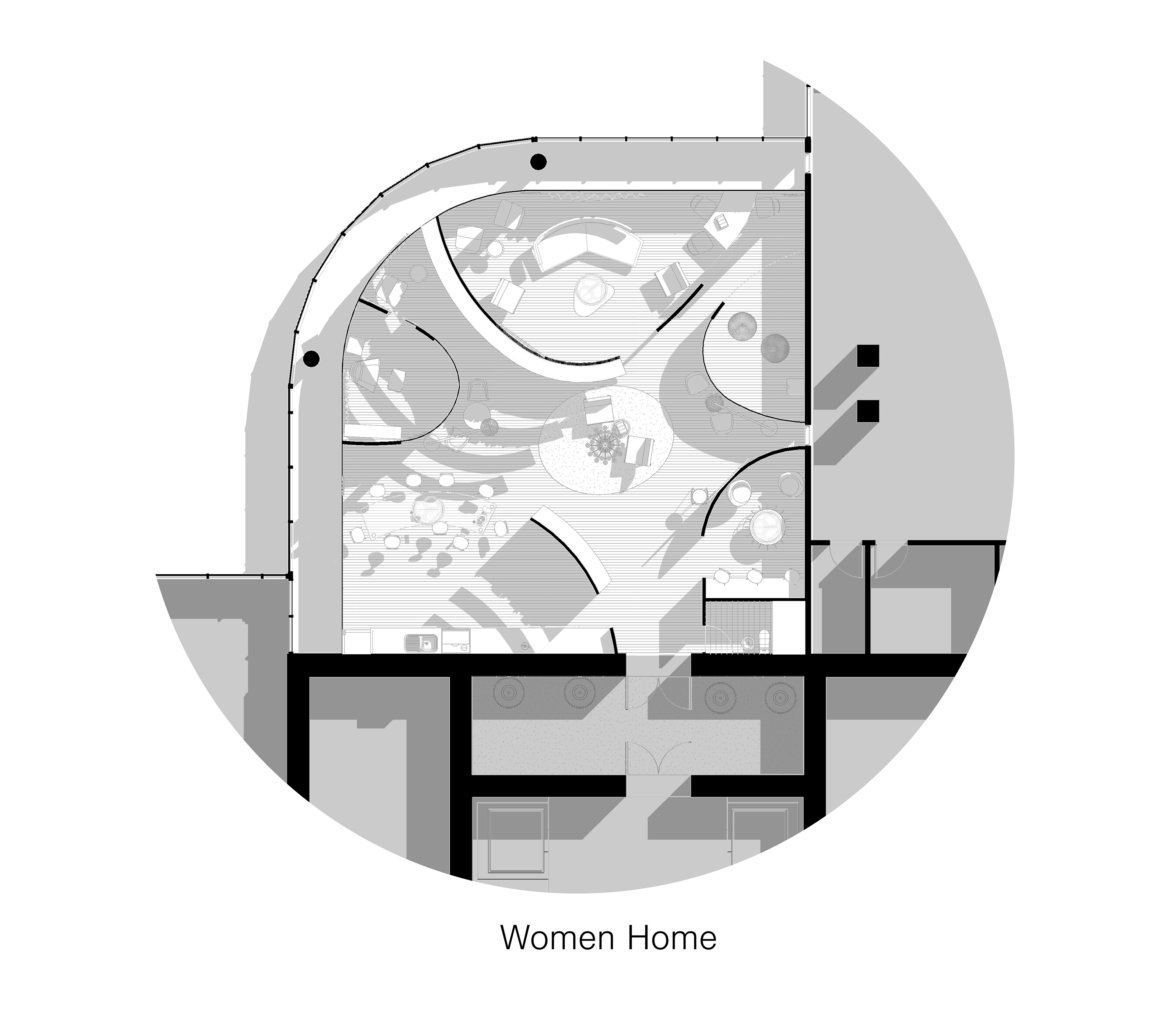
When arriving into the women's house you are immediately greeted by a library with books that empower women.
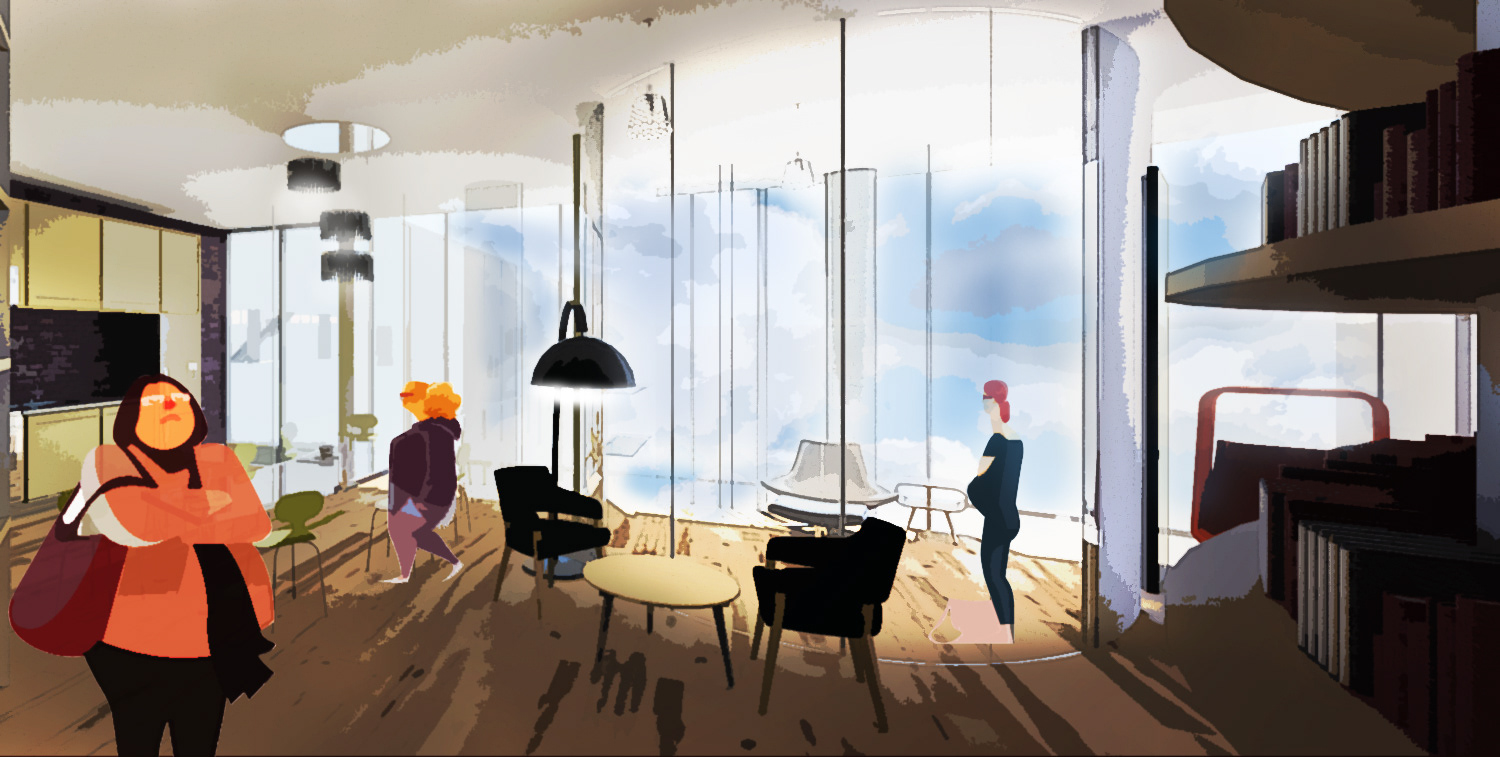






Outside eating space designed to mimic a domestic patio.

